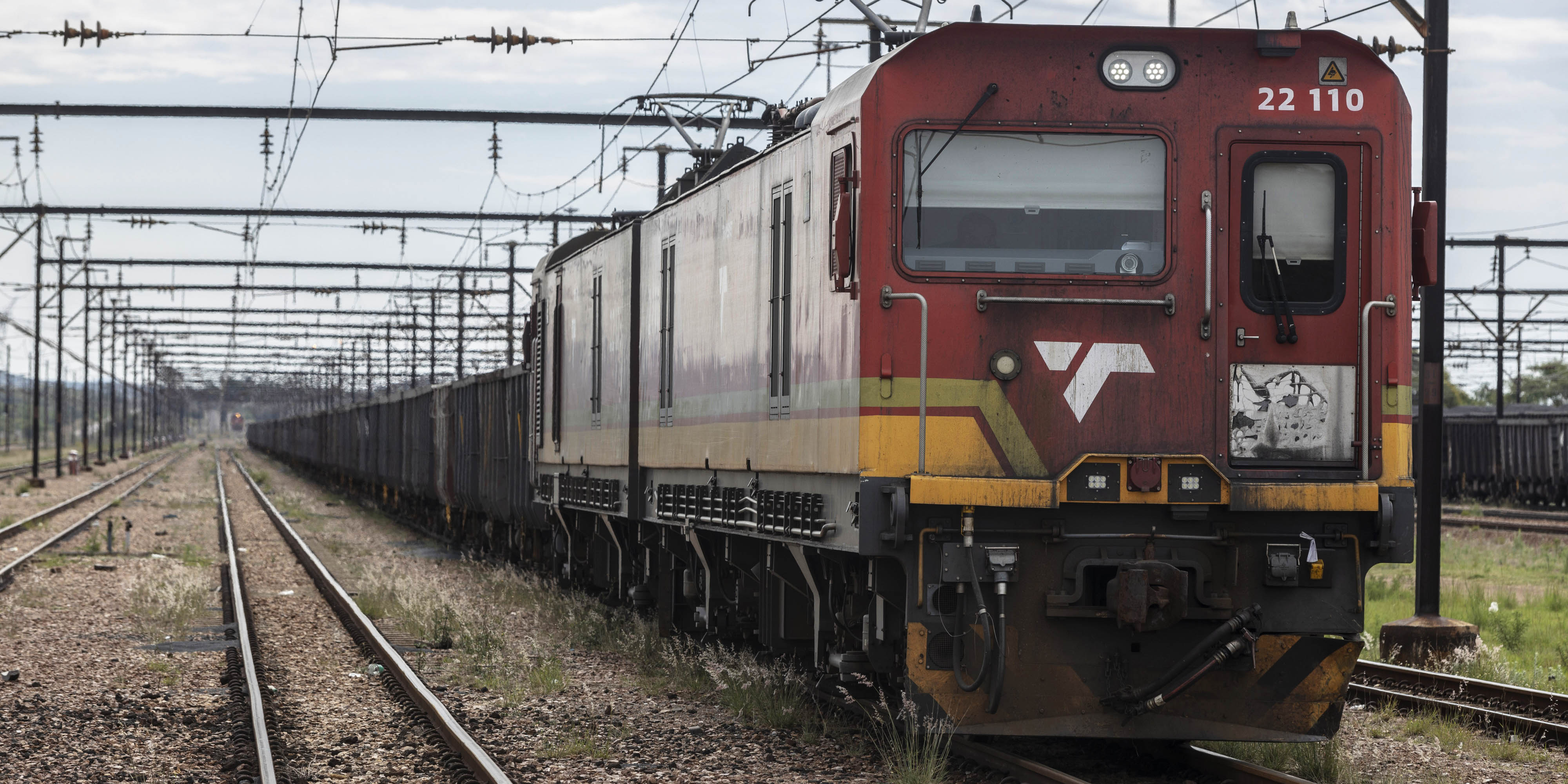On Christmas Eve 2024, the Department of Transport released a final network statement that sets out the process of ending Transnet’s monopoly on rail and bringing in private-sector players to independently run trains.
On New Year’s Eve, Transnet released interim financial results showing that efforts to fix the state-owned entity (SOE) are going at a glacial pace and still holding back the country’s revival of exports. However, there are promising signs of a recovery in its rail operations.
Transnet is responsible for ferrying most of the iron ore and coal that South Africa produces and exports worldwide. Its operations also have a role in moving steel, cement, agricultural products and bulk liquids. The good news is that rail volume declines have been arrested for goods such as coal and manganese for the first time in a long while.
Industry players believe that the final network statement will be a game-changer for Transnet, as it will pave the way for private-sector players to independently run trains on the SOE’s rail network for more than five years while also taking on the risk of maintaining and upgrading rail infrastructure.
How it will work is that Transnet expects the private sector to fully participate in its rail network by April. However, the process is set to start at the end of January, with Transnet announcing the rail lines that will be open for use on its 21,232km rail network.
The reality is that Transnet has no money to invest in its rail network, which is plagued by vandalism and the theft of copper cables. So private-sector players will have to take over the rail system, deploy their locomotives and heavy-haul wagons, and take up rail slots offered by Transnet. This entire initiative will be managed by the newly created Transnet Rail Infrastructure Manager.
In the network statement, Transnet estimates that R65-billion must be spent over the next five years to maintain its rail infrastructure in order to reach the target set by Transport Minister Barbara Creecy. She has set a target for the Transnet rail network reaching 250 million tonnes (Mt) of goods that it moves. Such a target seems lofty considering that during its 2023/24 financial year, Transnet moved 151.7Mt of goods on its rail network.
In its heyday (in about 2009), Transnet could easily record annual volumes well above 300Mt. It hopes to return to those days. Chief executive Michelle Phillips said at the release of the group’s 2024 annual results in September 2024 that Transnet’s target was reaching 170Mt by 2025, but she had set a stretch target of 193Mt.
Private-sector players line up, and rules explained
The good news is that several private-sector players are ready to support Transnet, including Traxtion and Grindrod, which have the financial resources (billions of rands) to support the SOE.
But how will the funding participation by private-sector players in Transnet’s rail systems work?
The players will have to pay Transnet tariffs to be able to operate on its rail network. In the previous draft network statement, private-sector players complained that the proposed tariffs were too high. These have now been reduced. Several private-sector businesses are now keen to participate in Transnet’s rail reform measure.
Private-sector participants have until Friday, 7 February to apply for slots on Transnet’s rail corridor – excluding the north corridor between Ermelo South and Richards Bay – in phase one, which is already open. In this phase, Transnet has allocated 2.1Mt of rail capacity for private-sector parties.
The private sector is warming up to the government and Transnet.
“It is extremely encouraging that the rates for all operators [Transnet and private operators] – a contentious point when the first draft of the network statement was released for comment – have been significantly reduced and the proposed single network-wide access tariff has also been replaced by a multitiered tariff which is aligned with international best practice,” said James Holley, CEO of Traxtion, which operates railway lines in several African countries.
There is also a new source of revenue for Transnet, as the fees that private-sector players will pay will boost its revenue, Holley said.
“The access charges which private operators will pay will generate a significant new revenue stream for Transnet, improving its financial position,” he said.
After all, the SOE continues to suffer financial losses and needs new money-making streams.
It extended its money-losing streak, recording a financial loss of R2.16-billion during the six months ending September 2024, which widened from a loss of R1.57-billion pencilled in during the comparable period in 2023.
New tariff regime
In the newly proposed tariff regime, there is no flat rate (previously the flat rate was set at 5%), and diesel operators would not have to pay for access to electricity, which would all be incentivised by Transnet. If a private operator brings in a diesel train, the new tariff regime does not call for it to pay for electricity.
Under the previous proposed system, additional charges, including the costs of incidents such as accidents, security breaches, operational failures or the so-called occurrence management charges, were adjusted annually in line with the prevailing consumer inflation rate.
Most of these requirements now fall under the final network statement released by the Department of Transport.
Road Freight Association CEO Gavin Kelly has pointed to risks in Transnet systems and asked several questions about whether it is ready and has the capacity for the private sector’s participation.
“Is the rail network, for example, the signalling, rail mass carrying capacity, points, sidings, warehousing, security and other infrastructure, ready to accommodate a ‘flood’ of trains and a drive from the national logistics chain requirements?
“Are the train sets adequate – or will these all need to come from the third-party operators? Who will adjudicate and resolve disagreements between these third-party operators or between them and Transnet itself?” Kelly asked. DM
This story first appeared in our weekly Daily Maverick 168 newspaper, which is available countrywide for R35.






